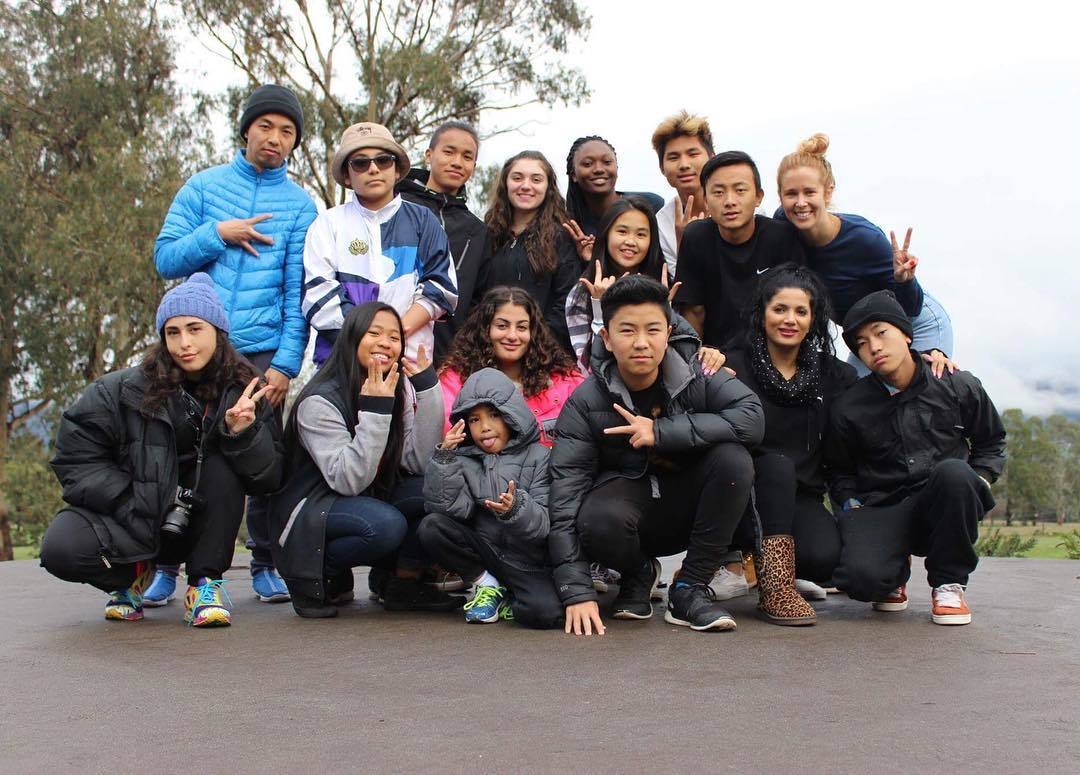Hëna Memishi has spent the past year popping, locking and dropping her way to big things. The Melbourne-based dancer — who credits her moves to eclectic inspiration from Aaliyah, Radiohead, J-dilla and Gold Panda — works as a back up dancer and model. But she’s also been finding ways to serve her community through dance.
Hëna is a regular collaborator with L2R: a not-for-profit organisation that that provides free hip hop classes to newly arrived refugee and immigrant children. The program seeks to not only engage kids through movement, but also offer a safe space where they can make friends and express themselves. We caught up with her to talk about her own relationship with dance, and how it can bring people together.

Tell us about your history with dancing.
I started when I was seven. I was basically obsessed with video clips so I used to record them to learn the moves. I started break dancing when I was about eight, and because I grew up in the country it wasn’t until I was fourteen that I started wagging school to go and train in Melbourne. I moved to the city when I was sixteen so I could be closer to the studios and now I travel back and forth between L.A and New York for training.

What’s the scene like in Australia? Do you have to travel to have a career?
It’s small but close-knit; we all train together and we all grew up together so there’s a strong sense of community. A lot of the good dancers have gone overseas so it has planted the thought in people’s heads that you need to go overseas to be successful. But I do think that you can be successful in Australia if you really stick to it, create your own scene and make it work for yourself.
It must take a lot of discipline and determination.
You just need to really love it. If you really love it then all the negative things don’t matter. That’s why I continue to train everyday. I’ve definitely had doubts at times, everyone has, but at the end of the day I go to sleep thinking about dancing and I wake up thinking about dancing.

Talking about community, I wanted to ask you about L2R. You’ve been part of that for a while now, tell us about how dancing can serve those kids.
Hip hop dance began because of politics; people from the South Bronx and West Coast communities, where hip hop was formed, were ignored and actively oppressed, that’s what gave birth to this art form. The aggression of breaking, the freedom of house and the confidence of vogue all have historical context. These moves were formed to help break down social, cultural and political barriers.
How do you see that impacting these dancers?
They’re at a time in life where you’re learning to be confident in yourself, but can also develop a lot of insecurities. Dancing is one of those things where you are so vulnerable but you have to step up and work with each other. The great thing about hip hop is that it’s so free, there aren’t really any set steps you absolutely have to follow. You can just do whatever you want, which is why it’s so great for engaging with young people. It takes time to connect without talking, and that’s why dance is such a powerful tool. You can teach and engage just by dancing and break down barriers without the need for language.
Credits
Text Kasumi Borczyk
Images via @honmemishi
